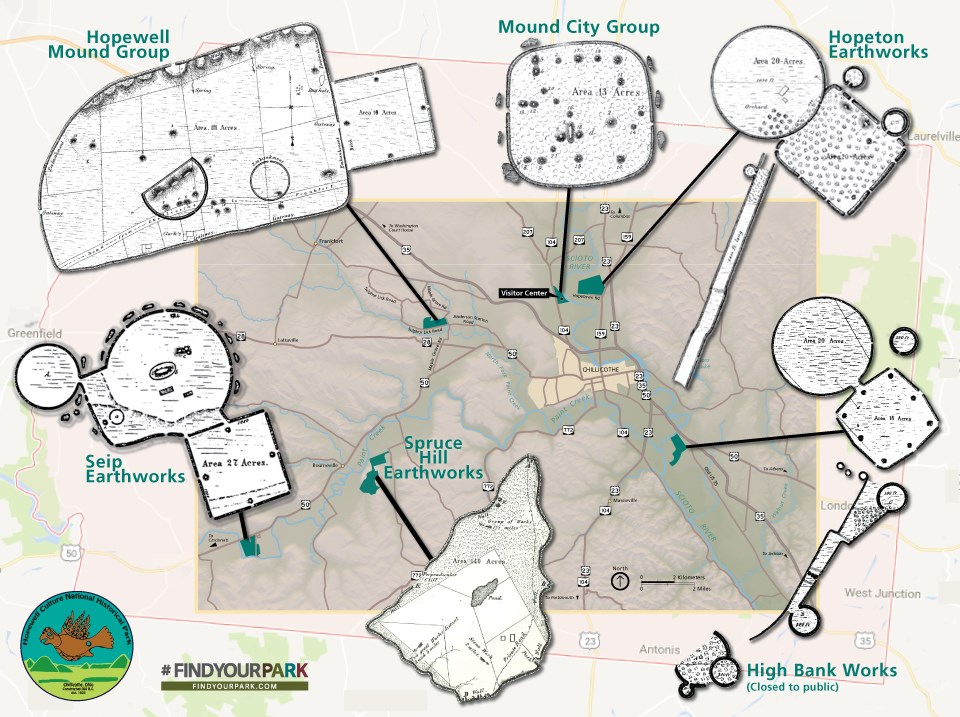Hopewell Mound Group
Hopewell Mound Group
Chillicothe, Ohio, 45601
Official WebsiteHopewell Mound Group map
Hopewell Culture National Historical Park Official Website
Hopewell Culture National Historical Park map
About this Location
The 300-acre Hopewell Mound Group is the type site for the Hopewell culture. Early archeologists named the site for its owner, Mordecai C. Hopewell. The general shape of the Hopewell Mound Group is a parallelogram 1,800 feet long on the east and the west sides and 2,800 feet long on the north and south. Archaeologists estimated that the walls were originally 35 feet wide at the base and enclosed an area of 111 acres. A smaller square enclosure with sides 850 feet long is connected to the east side of the parallelogram. Remnants of the east, west, and north walls are visible. Two earthworks features are located within the parallelogram, one circular and one D-shaped. Three of the seven mounds in the D-shaped enclosure are joined. Their original size is estimated to be 500 feet long, 180 feet wide, and 30 feet tall. This is the largest known mound constructed by the Hopewell culture, and a remnant of it is visible today.
This site is accessible for visitors during daylight hours. Hopewell Mound Group has a 2.5-mile interpretive trail and a portion of the Rails-To-Trails bike path. Bikes are only permitted on the bike path, not on the interpretive trail. This site contains restrooms and a covered picnic shelter. Download the site bulletin and hit the trail!
About Hopewell Culture National Historical Park
See all hotspots at Hopewell Culture National Historical Park
Earthen mounds and embankments forming huge geometric enclosures grace the landscape of the Ohio River Valley. These monumental structures were built by Native American hands almost 2,000 years ago. Hopewellian people gathered at these earthworks for feasts, funerals, and rites of passage. Come learn about these sacred spaces and reflect upon the lives of these American Indians.
Visible remnants of Hopewell culture are concentrated in the Scioto River valley near the present-day city of Chillicothe, Ohio. The most striking Hopewell sites contain earthworks in the form of circles, squares, and other geometric shapes. Many of these sites were built to a monumental scale, with earthen walls up to 12 feet high outlining geometric figures more than 1,000 feet across. Conical and loaf-shaped earthen mounds up to 30 feet high are often found in association with the geometric earthworks. Hopewell Culture National Historical Park preserves six earthwork complexes: High Bank Works, Hopeton Earthworks, Hopewell Mound Group, Mound City Group, Seip Earthworks and Spruce Hill Earthworks.
Restrooms at Mound City Visitor Center.
Content from Official Website and Hopewell Culture National Historical Park Official Website
